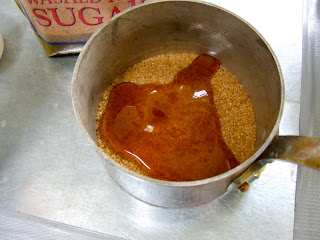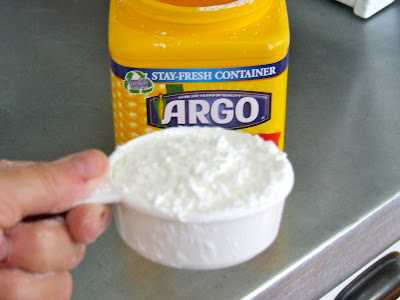There are two things my little Kiwi mother cooked that I know came from her family tradition; Mint Sauce for lamb, and Plum Pudding. She was always too scared to flame it and so didn't, and didn't make Hard Sauce, at least I don't remember that, but the Cool Whip was just fine, thank you.
I'm kind of a cream snob these days so that's what I'll top mine with, but
finally I got busy ahead of time and made my Plum Pudding. For Mom.
The most difficult part of the whole thing was finding
suet, and that's one thing I made sure I got because I remember that Mom said it
just wasn't right without it!
I knew that suet was the hard fat from around the kidneys of beef, and that you
grate it up like hard cheese, which it resembles but actually looks and feels more like tiny soap flakes.
So if you are going to make a Plum Pudding, the first thing you need to do is find either an honest-to-goodness butcher shop or, as in my case, a grocery store that cuts up the beef carcasses.
Here in El Paso, I bumbled around until the nice man at the Ruidoso Market downtown (where everyone assured me I would find it) told me to go up the street to Silva's Market.
Silva's is nestled right down at the bottom the Stanton Street Bridge from Juarez, and you need to ask for "
sebo de res". A great big chunk of this stuff will cost you one whole dollar.
Hot Damn! What a buy!
For a lovely Plum Pudding sans suet, see http://makinglifedelicious.com/2010/12/11/english-plum-pudding-aka-christmas-pudding-aka-cake/
Anyway, after you procure your suet, chill it well and grate up however much you need.
Here is the way I have the Plum Pudding figured out:
In a large bowl, combine equal amounts of:
Bread Crumbs
Self-rising flour
Grated Suet
In my case, I used 8oz. of each, but could have used 10 and had enough room in my steamer mould.
Add these spices, generously, and by that I mean at least a teaspoon:
Mace
Clove
Nutmeg

Cardamom
Allspice
Add 1T salt and half as much brown sugar as the amount of flour, that was 4 oz.
Add 4 oz. each (half as much as the flour) of:
candied peel (I used just a bit -- fruitcake phobia, but next time I'm leaving it out altogether)
golden raisins (Sultanas! don't you love that word?)
currants
chopped date
chopped prunes (hence "PLUM pudding")
and a chopped apple.
In another bowl pour125ml. ale ( Stout in English recipes) You would of course increase if you used larger proportions of the rest.
and 4 eggs, or half as many eggs as ounces of flour.
Mix that in with the dry ingredients and pour it into a heavily greased bowl or steaming mould. Cover with wax paper or cloth and tie securely, or use a covered mould like mine.
Put it into a stockpot with the water coming up halfway the bowl, cover, and boil softly all day.
Or, put it into a pressure cooker with the pressure gage OFF, put the top on and simmer for 1 hour, then, add more water, put the pressure gage ON and cook about another hour. This is to give it time to rise before "really" cooking.
NOW, here is where it gets mysterious. Supposedly, you can just put this away into a cool cabinet and leave it alone until right before serving, when you steam it AGAIN for a while to get it warm and moist.
I cannot abide the idea of something that's to be eaten NOT being in the fridge, so of course that's where mine is. I think I remember Mom leaving hers in the pantry, but maybe not?
The verdict -- it's good. It tastes pretty much like my mother's, but doesn't seem as dark as hers was. Possibly because I didn't give it a liquor "bath" as my Auntie recently recommended. Hard to do when there are non-drinkers to partake.
It makes me think of my sweet mother and all the generations of women before me who did their best to make Christmas as special as it could be. Merry Christmas!













































































